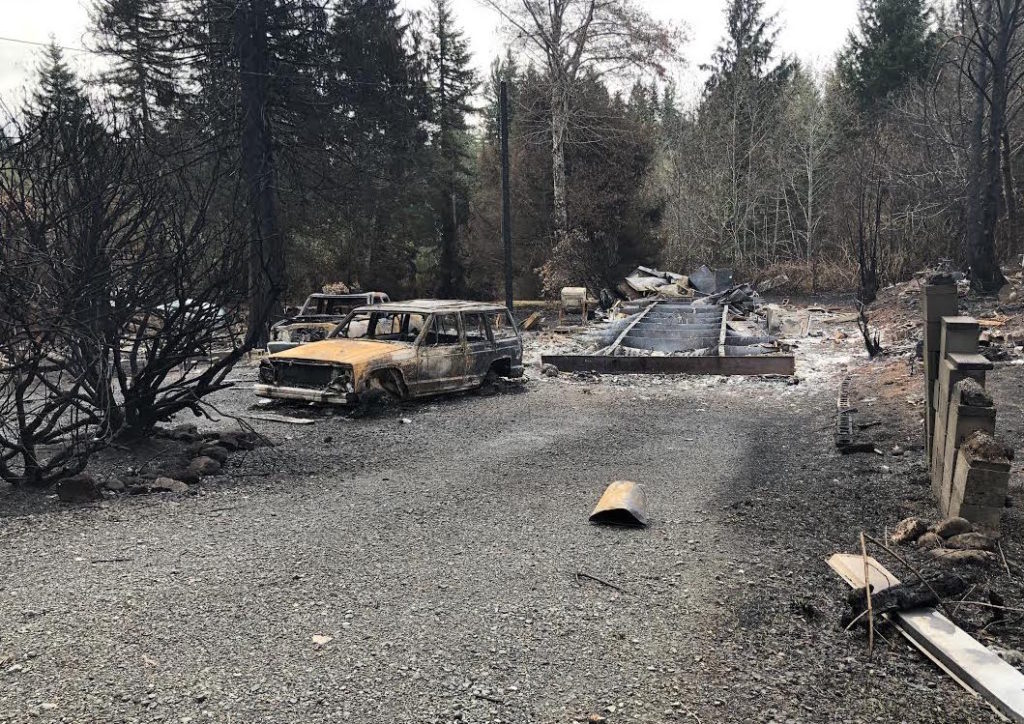
By BEN BOTKIN/Oregon Capital Chronicle
More than 1,100 Oregon households have received help from a $150 million wildfire recovery program the state set up after residents lost their homes during the devastating 2020 Labor Day fires.
Three years later, the area is still recovering from the wildfires, which burned more than 1 million acres and destroyed or heavily damaged more than 4,300 homes in an eight-county region of Oregon. A full recovery is still years away.
Since the fall of 2021, the Oregon Housing & Community Services agency has used or committed all $150 million for the wildfire recovery program that lawmakers appropriated to help Oregonians obtain temporary housing, receive a new home, or find affordable housing, the agency said in a state report released Monday.
The final report focuses on $35.3 million of the money, which has helped 1,146 households with temporary assistance, a full recovery or both. Of that group, 867 households fully recovered from the wildfires, usually with the construction of a home or the purchase of one. There also were 450 households that received temporary housing, such as short-term rentals or motel rooms and other housing assistance.
“Thanks to a tremendous amount of work by our local partners, over a thousand families were served, including hundreds who were able to achieve full recovery,” Lauren Dressen, chief recovery officer of the housing agency’s Disaster Recovery and Resilience Division, said in a statement.
The remaining $114.7 million in the fund is for affordable housing projects in Lincoln, Maron, Jackson and Lane counties, the four counties hardest hit by the wildfires, the report said. Officials expect that to pay for more than 400 new housing units.
Needs remain
State planners estimated that residents have nearly $1.9 billion in unmet needs after the 2020 fires. The $150 million was “never intended to address all needs,” but was intended to provide immediate help, the report said.
The wildfires hit southern Oregon’s affordable housing market hard. Rep. Pam Marsh, D-Ashland, said her district lost about 1,500 manufactured homes or recreational vehicles in the fires, with 19 mobile home parks destroyed. About 2,500 homes in her southern Jackson County district were destroyed.
Many in those homes were retirees or working class people with modest incomes, Marsh said.
“The only way those families get rehoused in the community is with significant public investment,” Marsh said.
Marsh said projects are starting to come online. But the planning and permitting takes time, she said, adding that in a couple years, the state-funded projects should be finished or in construction.
“I think two years from now we’ll be looking at what’s there on the ground, and we’ll have a pretty good measure of what we’ve been able to bring back,” Marsh said.
But for now, people are still living in motel rooms, camping in recreational vehicles and waiting for more housing to become available.
“We know people have left the area,” Marsh said. “We know anecdotally people are living with multiple families in a small unit. We know they’re camping in RVs in somebody’s driveway. But it’s really hard to put numbers with those anecdotes. You know, in many cases we have had to face the fact that we are not going to bring back some of our neighbors because they just needed to start life someplace else.”
Separate from the $150 million, other programs are paying for another 569 homes, including some that will be ready in 2024 and 2025. They include Renaissance Flats, a 72-unit affordable housing development that opened last month in Jackson County.
Additionally, Oregon officials are planning how to spend $422 million of federal disaster recovery funds, which was awarded to the state in 2021.
That plan includes a housing replacement program for homeowners who lost their homes in the fires and a new home ownership program for renters. Officials with the homeowner assistance program expect to start taking applications in early 2024.
More information: For more information, visit the ReOregon website here.


